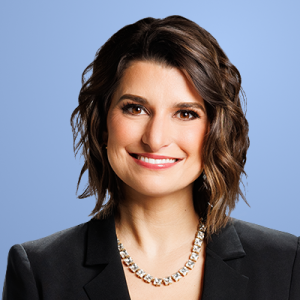In times of high inflation, people tend to pay more attention to what they're spending. But one thing many manufacturers count on is that consumers don't usually notice if a product shrinks. One man is trying to raise more awareness about this common practice known as shrinkflation.
Edgar Dworsky knows what it means to be frugal.
"My father was a cheapskate, I mean, plain and simple. So I learned from the best," he said.
He's been tracking not only prices, but the size of goods since he was a teenager.
"I mean, I remember my Mounds candy bar in the 1960s used to be two ounces, and it became one point something," he said.
It's turned into his passion. He now runs a website called Mouseprint.org where he writes about everything from paper towels to ice cream.
His website has pages and pages dedicated to exposing new package sizing.
"Over the past year and a half, I'd say the number of items that I've written about has doubled from past years. So with all this food price inflation, we're seeing grocery price inflation," Dworsky said.
Shrinkflation is the art of reducing a package size but not reducing the price, and sometimes even raising the cost. It's not always easy to catch.

Are retailers signaling a pending recession?
Target, Costco and Macy's say consumers are changing their buying habits, which could be an early sign of a recession.
"These companies have become masters at kind of package manipulation. The packages may look the same size, but you're getting less. I can think of an example of two cereal boxes. You can look at them head on. And they look like the same, the old and the newer, the same quantity. If you turn them sideways, you see the new one's a little bit more narrow. At some point, I don't know how these boxes can even stand up on the shelf, they're getting so narrow," he said.
People send Dworsky tips about products, like toothpaste, with pictures showing the tubes dropping in size. Or one tip on a milk producer that shrunk its half-gallon carton down to 59 ounces.
"Is there nothing off limits? I've always said it's gonna go too far. I'll know it's gone too far when you open that carton of eggs and there's only 11 inside," he said. "When traditional ultra-pasteurized milk isn't a half gallon anymore, to me, that's gone too far."
Shrinkflation could cost companies business. A survey by Morning Consult last year found nearly 50% of respondents say they switched brands after noticing a product shrunk. Thirty percent said they stopped buying from a specific brand altogether. Dworsky says shrinkflation tends to come in waves during times of high inflation, but don't expect the practice to ever completely disappear.
"As long as there are groceries on supermarket shelves, we're going to see shrinkflation. Hopefully the number of instances will decrease when inflation decreases," Dworsky said.
What can consumers do? Dworsky says pay attention. Before you go to the store, take a look at the last package of goods you have in your cabinet and take note of what the net weight or net count is. He says that generally, generic or store brands will be the last to downsize. And pay attention to the per-unit price. Dworsky says he's very strategic when he goes to the store. He literally goes in for items on sale and nothing else. He says his shopping bill is rarely more than $20 each time.










